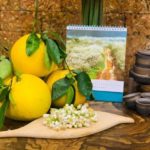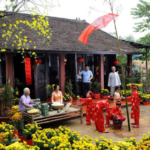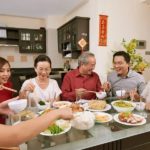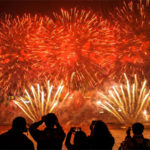Are you excited for the upcoming Lunar New Year? Tet is a time for family gatherings, feasting, visiting relatives, going to the temple, and exchanging wishes for a peaceful, lucky, and prosperous new year. Here are some traditional customs observed by the Vietnamese people during Tet.
1 Worshiping the Kitchen God
 Worshiping the Kitchen God
Worshiping the Kitchen God
On the 23rd day of the last lunar month, which is known as the Kitchen God Day, Vietnamese families clean their kitchen, buy a golden fish, clothes, and gold to offer to the Kitchen God. The Kitchen God will return to heaven and report everything that has happened in the household to the Jade Emperor. After the offering, the golden fish is released into a river or a stream as an act of releasing and making merit.
Learn more:
2 Making Sticky Rice Cakes
“Cay neu, trang phao, banh chung xanh” (green sticky rice cake) is an essential part of Tet. Each family makes their own sticky rice cakes, starting as early as the 23rd day of the last lunar month and sometimes continuing until the 27th, 28th, or 29th day of Tet. These sticky rice cakes are given as gifts to relatives and friends.
In the northern region, people make square sticky rice cakes (banh chung), while in the southern region, they make cylindrical sticky rice cakes (banh tet). The tradition of making sticky rice cakes brings warmth and meaning to Tet.
Learn more:
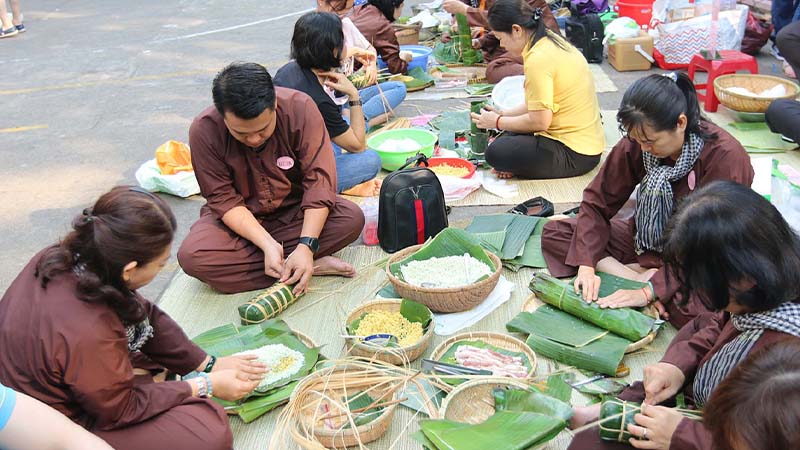 Making Sticky Rice Cakes
Making Sticky Rice Cakes
3 Decorating with Flowers
The cherry blossom in the north and the apricot blossom in the south are the typical flowers associated with Tet. Families also decorate their homes with kumquat trees, which are considered symbols of luck, happiness, and prosperity, as well as with chrysanthemums and daffodils to bring joy and good fortune into their homes.
Learn more:
 Decorating with Flowers
Decorating with Flowers
4 Five-Fruit Tray
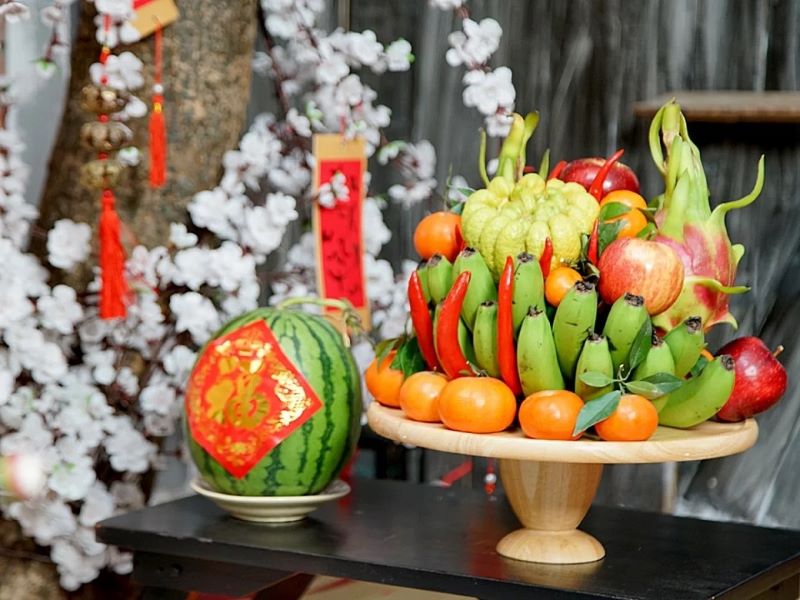 Five-Fruit Tray
Five-Fruit Tray
The five-fruits tray is an indispensable part of Tet. Different regions have different fruit selections for the tray. It is a way to show respect to heaven and earth and to ancestors, as well as to wish for a year full of luck, wealth, and prosperity.
Learn more:
5 Spring Cleaning
Before Tet, Vietnamese families have a tradition of thoroughly cleaning their homes to remove any bad luck from the previous year and to welcome the new year with good luck and fortune.
Learn more:
 Spring Cleaning
Spring Cleaning
6 Ancestor Worship
 Ancestor Worship
Ancestor Worship
Before Tet, as a sign of respect and filial duty, descendants often visit their ancestors’ gravesites to clean and pay their respects.
7 New Year’s Eve Worship
The New Year’s Eve feast is usually held on the evening of the 30th day of the last lunar month. Every Vietnamese family prepares a feast to worship their ancestors, and then they gather around the table to share a meal, talk, and bond. It marks the end of the old year and welcomes the new year with new and more auspicious things to come.
Learn more:
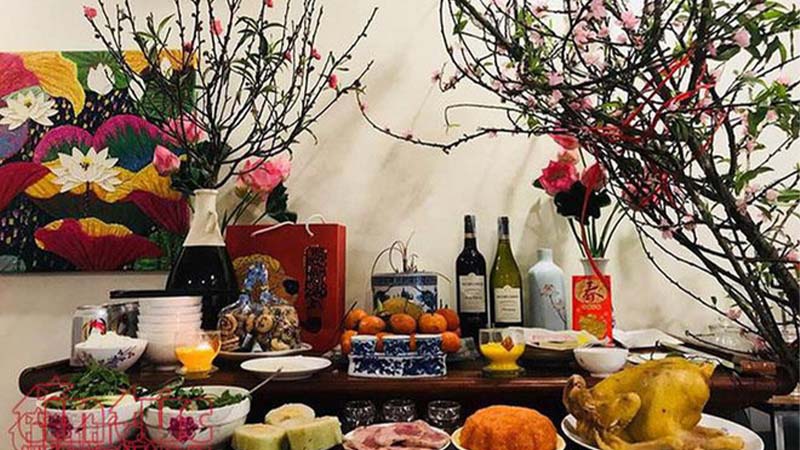 New Year’s Eve Worship
New Year’s Eve Worship
8 Welcoming the New Year
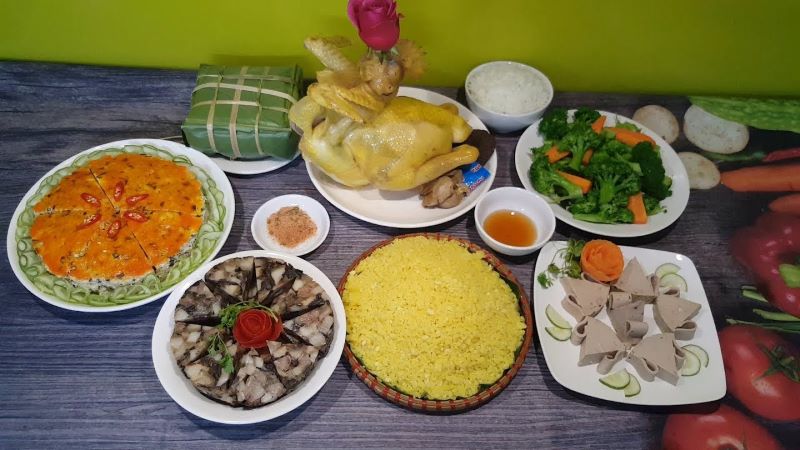 Welcoming the New Year
Welcoming the New Year
Giao Thua (New Year’s Eve) is the moment of transition from the old year to the new year. Depending on their customs, families either worship the fruit tray or the steamed sticky rice with chicken. The worship takes place outdoors at the last minute of the old year, symbolizing the expulsion of bad luck and the welcoming of a new year filled with good fortune.
Learn more:
9 Seeking Fortune
A beautiful custom during Tet is seeking fortune, which is done on New Year’s Eve or early in the morning of the first day of the lunar new year. The act of seeking fortune is meant to bring luck and prosperity into the home for the new year to come.
 Seeking Fortune
Seeking Fortune
10 First Visit to Someone’s Home
After the first day of Tet, it is customary to pay visits to relatives and friends to exchange New Year greetings. People offer their best wishes and often give lucky money in red envelopes.
11 Temple Visits
Visiting temples during the new year is a spiritual practice among Vietnamese people. It is a way to show respect to the Buddha, ancestors, and to pray for a year full of luck, wealth, and peace for the family.
Learn more:
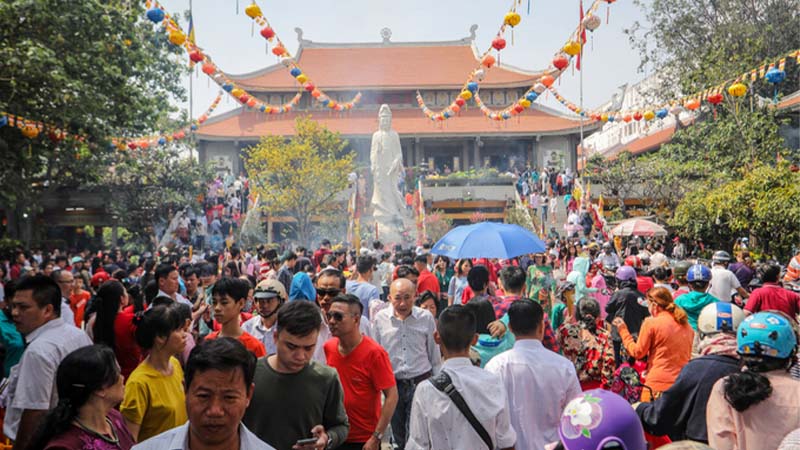
12 New Year Wishes and Birthday Celebrations
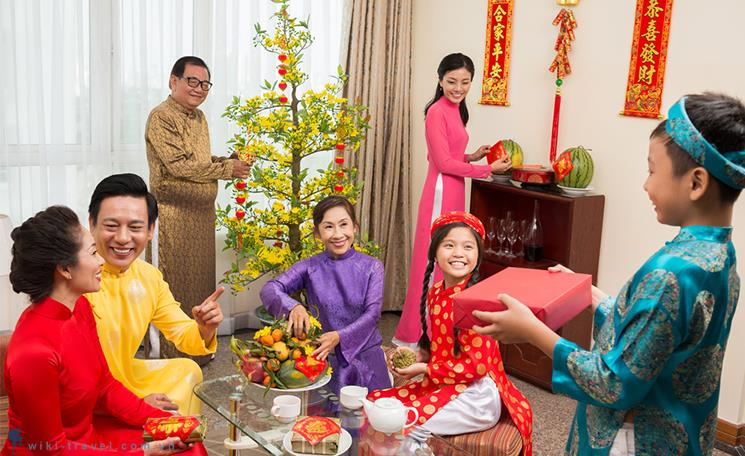 New Year Wishes and Birthday Celebrations
New Year Wishes and Birthday Celebrations
During Tet, people visit their relatives and friends to exchange New Year greetings and wish them well. They wish each other good luck and often give lucky money in red envelopes.
13 Going on Excursions
After the first day of Tet, many families go on excursions to seek good luck and fortune, especially in their work, business, and studies.
Learn more:
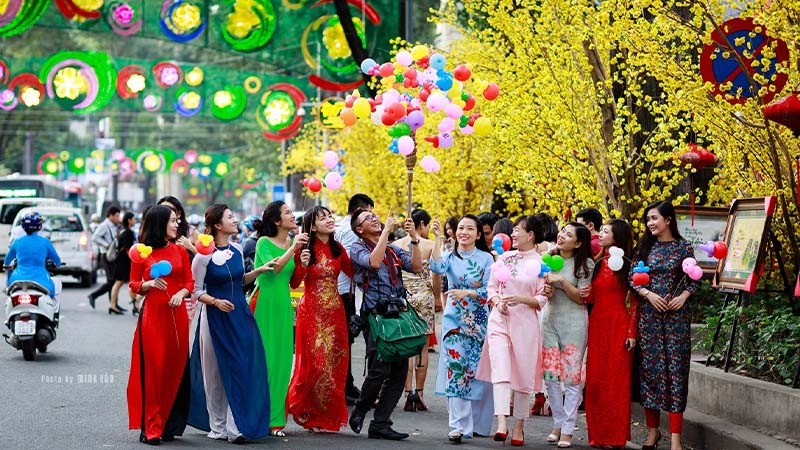 Going on Excursions
Going on Excursions
Learn more:
Above are the traditional customs observed by the Vietnamese people during Tet. These customs are simple yet meaningful and bring families together. Wishing everyone good health and prosperity in the new year.
Traditional Customs for a Lucky New Year’s Eve
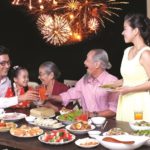 Customs for a Lucky New Year’s Eve’>
Customs for a Lucky New Year’s Eve’>As the old year draws to a close, welcome in the new one with hope and optimism. Dien May XANH is here to share traditions and customs that bring good fortune for the entire year ahead. Join us now to stay in the know!

























